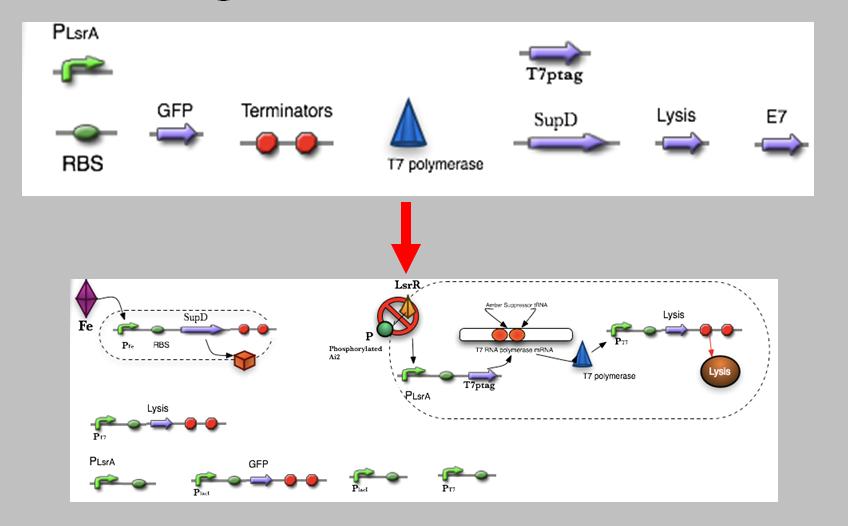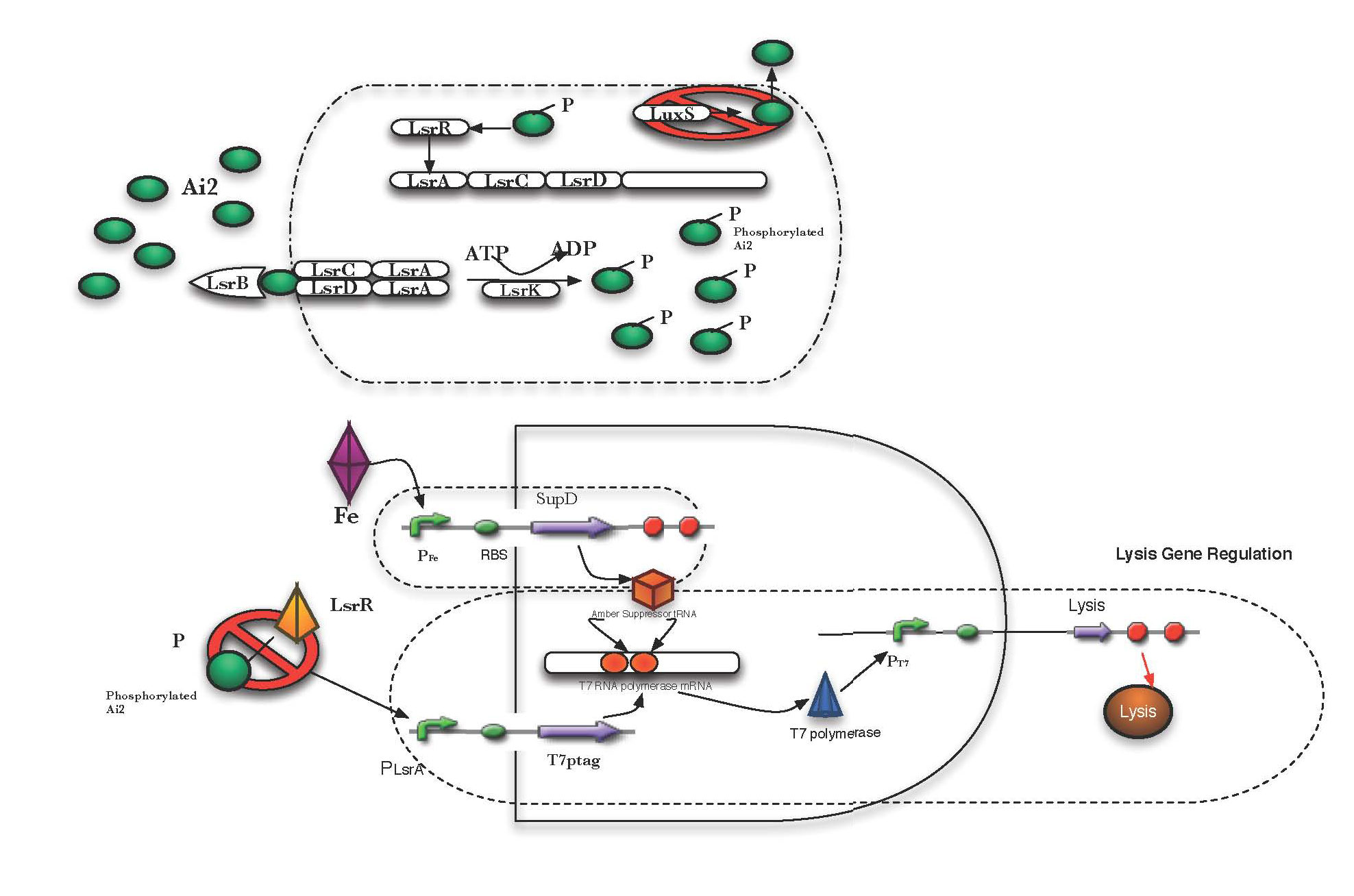Team:NTU-Singapore/Project/Approach
From 2008.igem.org
Lalala8585 (Talk | contribs) |
Lalala8585 (Talk | contribs) |
||
| Line 29: | Line 29: | ||
==Standardization== | ==Standardization== | ||
In standardization, the Team hopes to establish standards that could be widely used and agreed. We also try to predict the function of components and compatibility of parts leading to a set of standards and protocols that could be used for future teams. | In standardization, the Team hopes to establish standards that could be widely used and agreed. We also try to predict the function of components and compatibility of parts leading to a set of standards and protocols that could be used for future teams. | ||
| + | =Construct design= | ||
| + | ==ColE7 and Immunity production system== | ||
| + | [[Image:Production_part_NTU.jpg|center|thumb|500px|O157:H7 full detector system]] | ||
| + | |||
| + | ==O157:H7 full detector system== | ||
| + | [[Image:Detector_AND_gate.jpg|center|thumb|500px|O157:H7 full detector system]] | ||
Revision as of 13:21, 25 October 2008
|
Contents |
Methodology
The NTU@iGEM team adopted a simple yet rigorous Engineering concept which can be broken down into three steps:
1) Abstraction
2) Decoupling
3) Standardization
Abstraction
In abstraction, the complexity of things was reduced by creating simple parts before developing these parts into higher complex devices and systems
Decoupling
In decoupling, each individual part was decoupled from the others, devising them without consideration for the other existing parts. Following which the fusion of different combination of these components formed a working device.
Standardization
In standardization, the Team hopes to establish standards that could be widely used and agreed. We also try to predict the function of components and compatibility of parts leading to a set of standards and protocols that could be used for future teams.
 "
"




